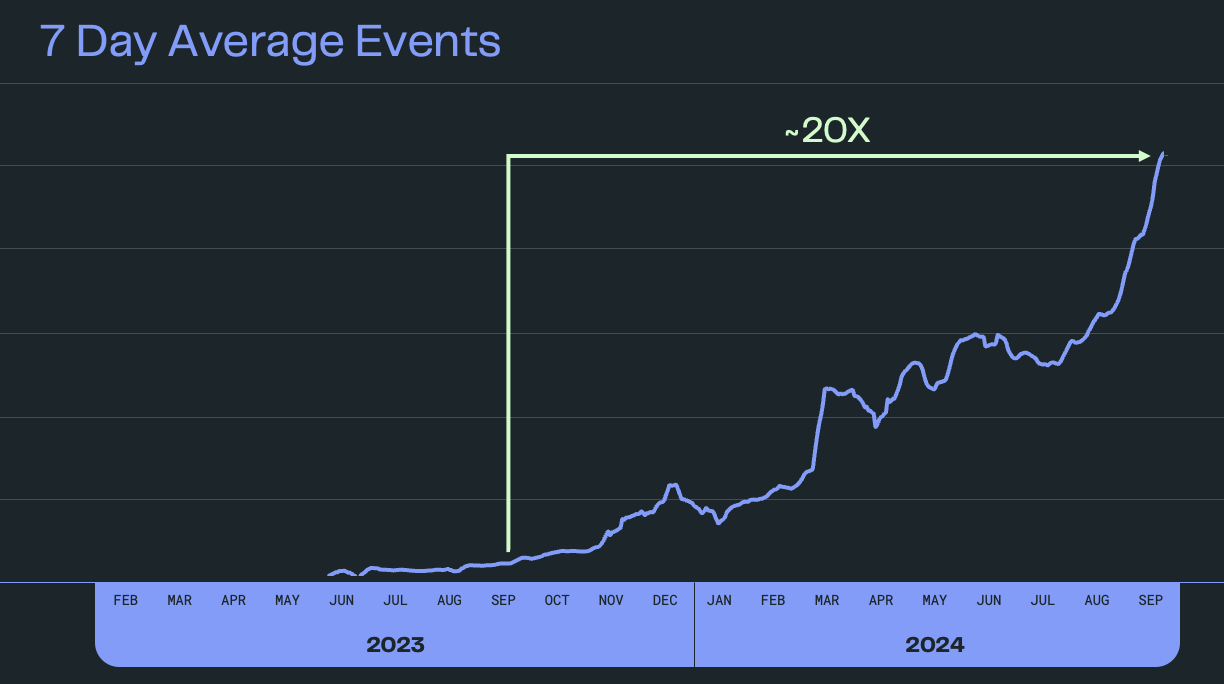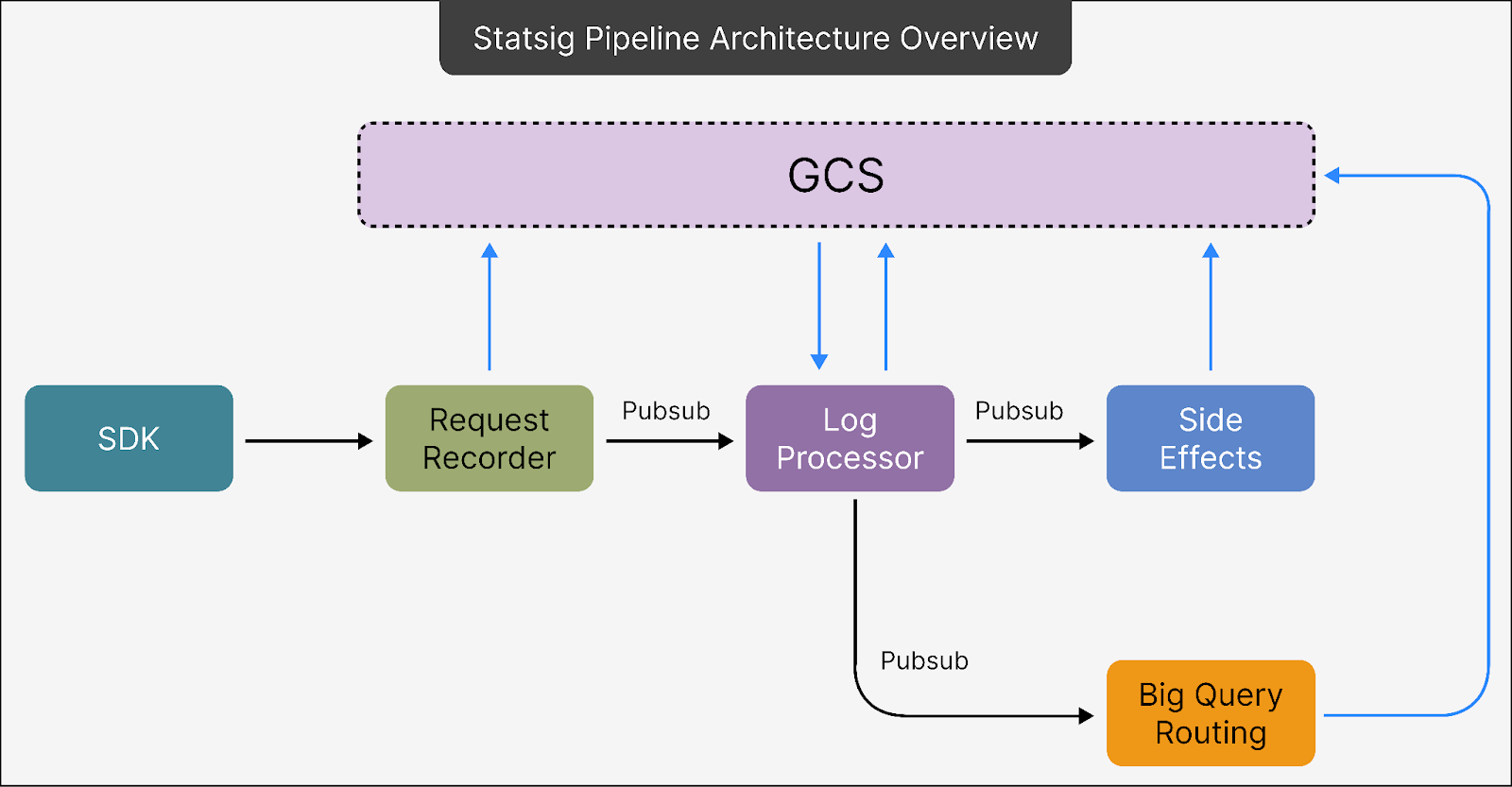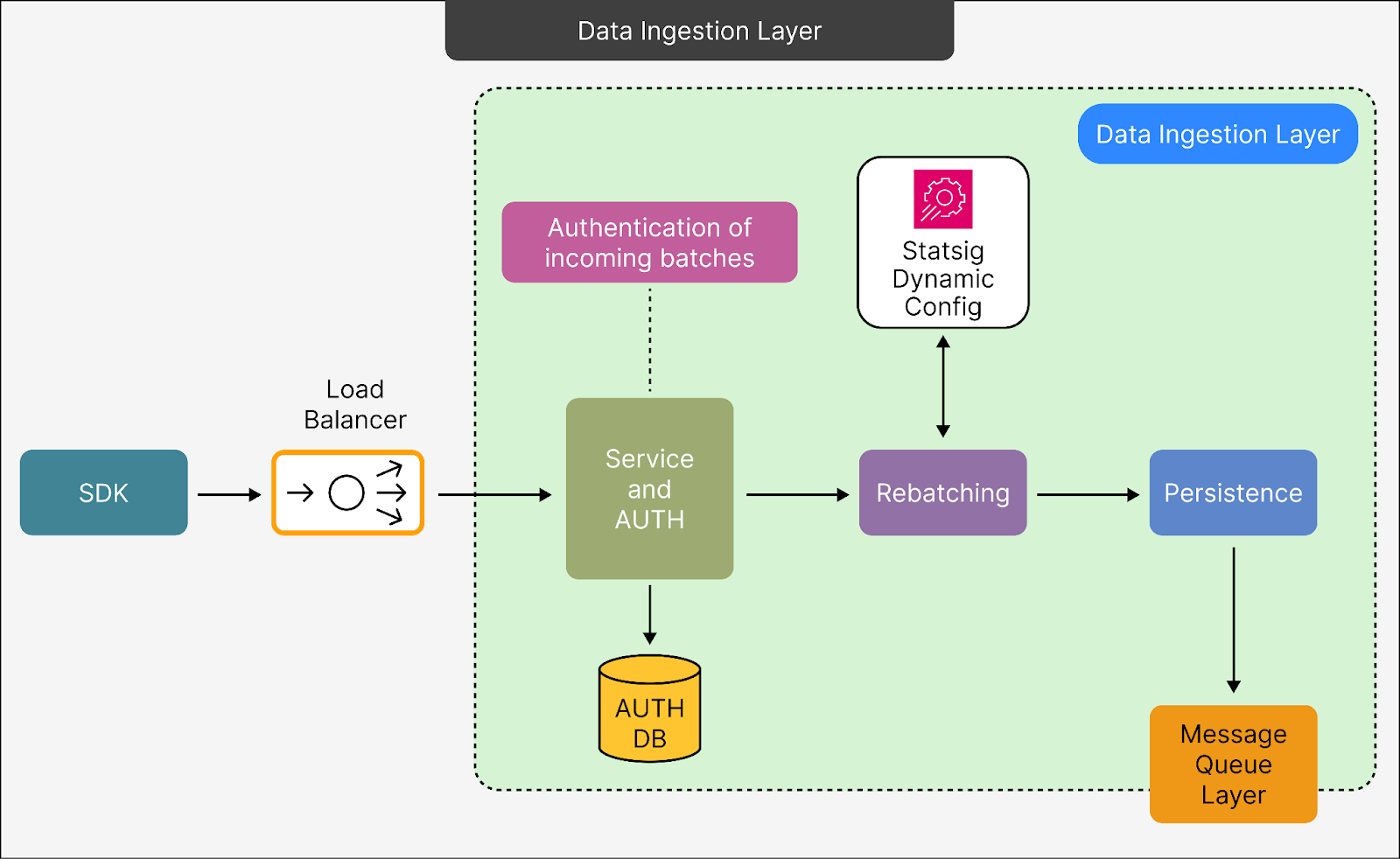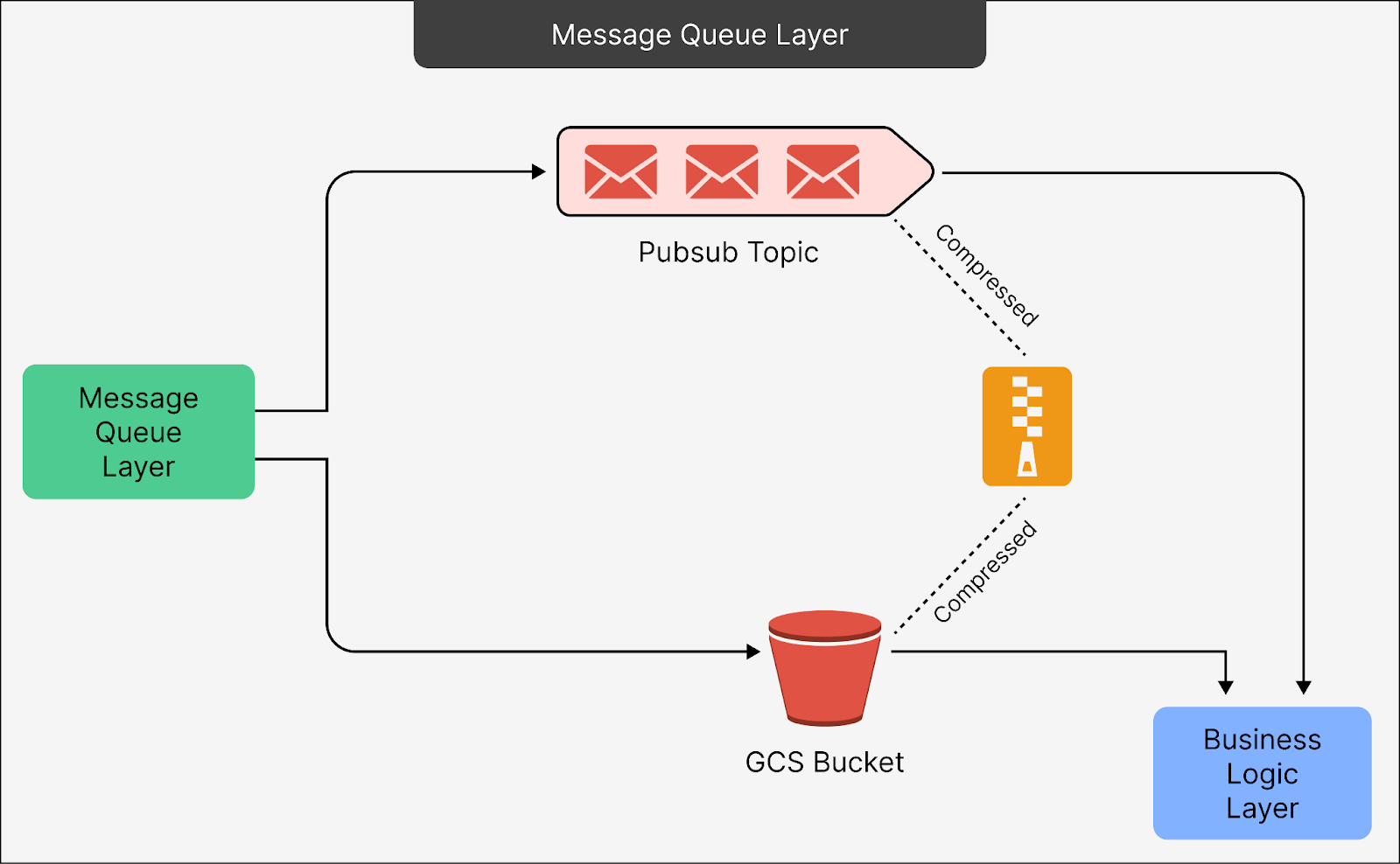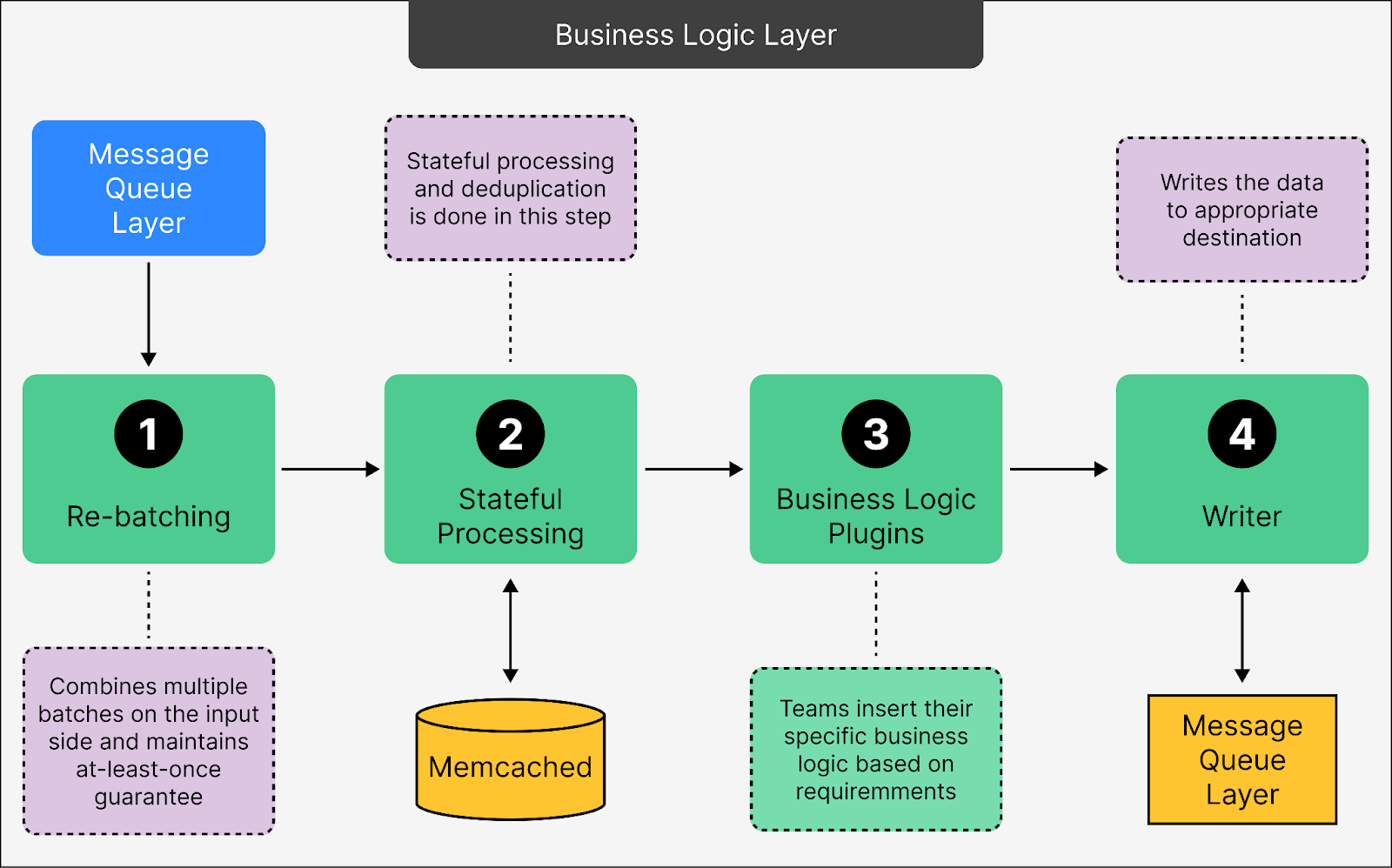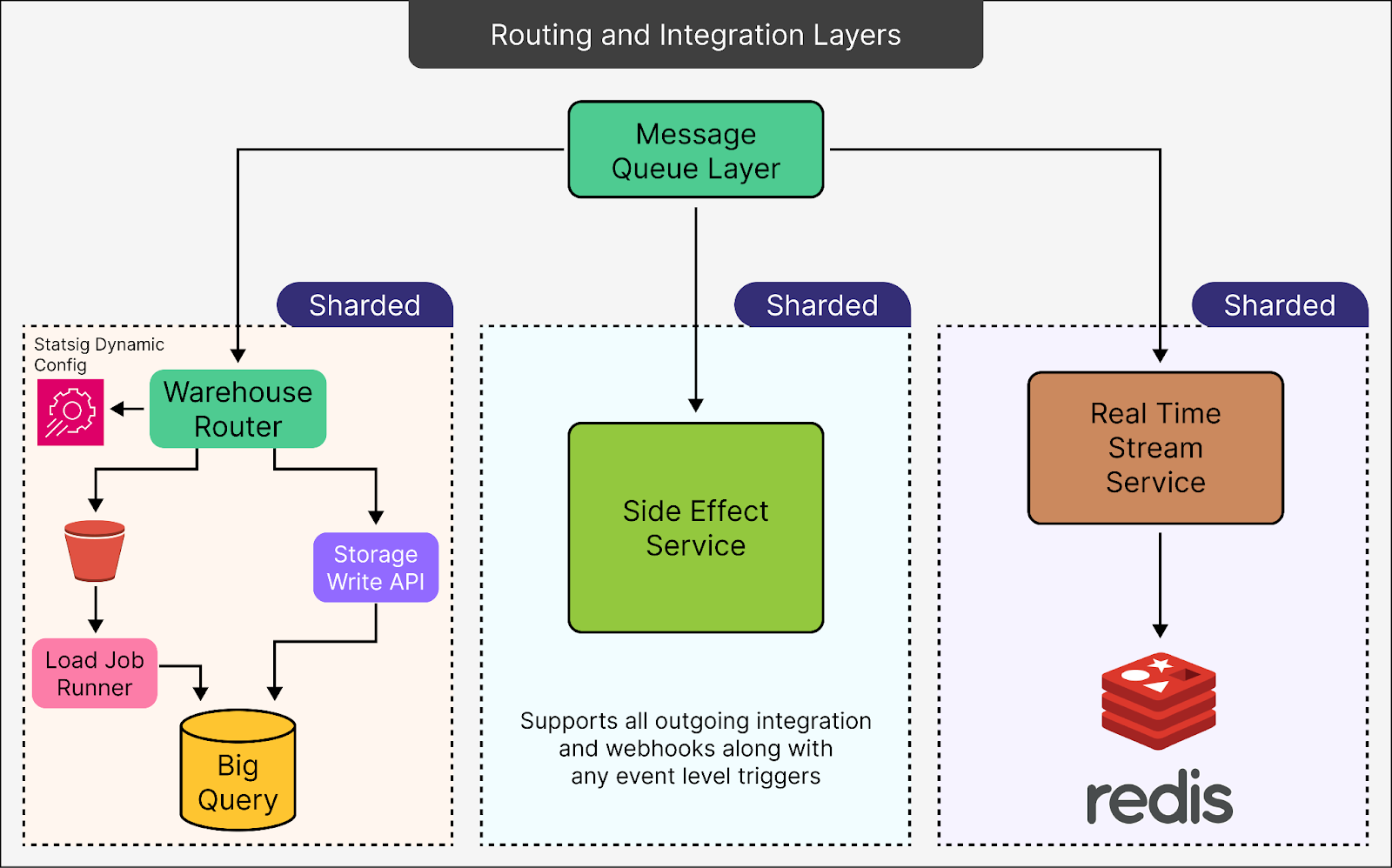- Mailing Lists
- in
- How Statsig Streams 1 Trillion Events A Day
Archives
- By thread 5358
-
By date
- June 2021 10
- July 2021 6
- August 2021 20
- September 2021 21
- October 2021 48
- November 2021 40
- December 2021 23
- January 2022 46
- February 2022 80
- March 2022 109
- April 2022 100
- May 2022 97
- June 2022 105
- July 2022 82
- August 2022 95
- September 2022 103
- October 2022 117
- November 2022 115
- December 2022 102
- January 2023 88
- February 2023 90
- March 2023 116
- April 2023 97
- May 2023 159
- June 2023 145
- July 2023 120
- August 2023 90
- September 2023 102
- October 2023 106
- November 2023 100
- December 2023 74
- January 2024 75
- February 2024 75
- March 2024 78
- April 2024 74
- May 2024 108
- June 2024 98
- July 2024 116
- August 2024 134
- September 2024 130
- October 2024 141
- November 2024 171
- December 2024 115
- January 2025 216
- February 2025 140
- March 2025 220
- April 2025 233
- May 2025 239
- June 2025 303
- July 2025 171
How Statsig Streams 1 Trillion Events A Day
How Statsig Streams 1 Trillion Events A Day
Read the acclaimed Designing Data-Intensive Applications book [O’REILLY] (Sponsored)Discover new ways of thinking about your distributed data system challenges. In this practical and comprehensive guide, Martin Kleppmann helps you navigate the diverse and fast-changing landscape of approaches to processing and storing data for data-intensive applications.
Get this 145-page ebook and start reading the book that’s become essential for anyone working with data systems. The newsletter is a collaboration between ByteByteGo and members of the Statsig engineering team (Pablo Beltran and Brent Echols). Statsig is a modern feature management, experimentation, and analytics platform that enables teams to improve their product velocity. Over the past year, Statsig has seen a staggering 20X growth in its event volume. This growth has been driven by high-profile customers such as OpenAI, Atlassian, Flipkart, and Figma, who rely on Statsig’s platform for experimentation and analytics. Statsig currently processes over a trillion events daily, which is a remarkable achievement for any organization, particularly one of their size as a startup.
However, this rapid growth comes with immense challenges. Statsig must not only scale its infrastructure to handle the sheer volume of data but also ensure that its systems remain reliable and maintain high uptime. It also needs to keep the costs in check to stay competitive. In this post, we’ll look at Statsig’s streaming architecture, which helps it handle the event volume. We’ll also look at the cost-efficiency steps taken by Statsig’s team. Statsig’s Streaming ArchitectureOn a high level, Statsig’s streaming architecture consists of 3 main components:
See the diagram below for a quick overview of the architecture: The Architectural ComponentsWhile the high-level view gives a broad look at Statsig’s pipeline architecture, let us also look at each component in more detail to gain a better understanding. 1 - Data Ingestion LayerThe data ingestion layer in Statsig's pipeline is the first and one of the most crucial stages of the system. It is responsible for receiving, authenticating, organizing, and securely storing data in a way that prevents loss, even under challenging conditions. The request recorder is a key functionality of the data ingestion layer, with its specific role being the first step in handling incoming data. However, the data ingestion layer includes the load balancer, authentication, rebatching, and persistence-related functionalities. See the diagram below: Here’s a simple breakdown of the various steps:
2 - Message Queue LayerThe Message Queue Layer is a critical stage in Statsig’s pipeline that manages how data flows between different components. This layer is designed to handle enormous volumes of data efficiently while keeping operational costs low. See the diagram below: As you can see, it consists of two main components: The Pub/Sub TopicPub/Sub is a serverless messaging system that facilitates communication between different parts of the pipeline. Since it is serverless, there’s no need to worry about maintaining servers or managing complex deployments. This reduces overhead for the engineering team. Pub/Sub receives metadata about the data stored in Google Cloud Storage (GCS). Instead of directly storing all the event data, it acts as a pointer system, referring downstream systems to the actual data stored in GCS. GCS BucketDirectly using Pub/Sub for all data storage would be prohibitively expensive. Therefore, Statsig offloads most of the data to GCS to reduce storage and operational costs. The pipeline writes bulk data into GCS in compressed batches. Pub/Sub stores only the metadata (like file pointers) needed to locate this data in GCS. Downstream components can then use these pointers to retrieve the data when required. The GCS Bucket stores the actual data in a compressed format, using Zstandard (ZSTD) compression for efficiency. For reference, Zstandard compression is highly efficient, providing better compression rates (around 95%) than other methods like zlib, with lower CPU usage. This ensures data is stored in a smaller footprint while maintaining high processing speeds. 3 - Business Logic LayerThe Business Logic Layer is where the heavy lifting happens in Statsig's pipeline. This layer is designed to process data while ensuring accuracy and preparing it for final use by various downstream systems. It handles complex logic, customization, and data formatting. See the diagram below that shows the various steps that happen in this layer: Let’s look at each step in more detail: RebatchingThis step combines smaller batches of incoming data into larger ones for processing. By handling larger batches, the system reduces the overhead of dealing with multiple small data chunks. The system is designed with an “at least once” guarantee. This means that even if something goes wrong during processing, the data is not lost. It will be retried until successfully processed. Stateful Processing To Remove RedundancyThis step focuses on deduplication, which involves filtering out repeated or redundant data. For instance, if the same event gets recorded multiple times, this step ensures only one instance is kept. To achieve this, the system uses caching solutions like Memcached. Memcached provides quick access to previously processed data, enabling the system to identify duplicates efficiently. Ultimately, deduplication reduces unnecessary processing. Business Logic PluginsThis layer allows different teams within Statsig to insert custom business logic tailored to their specific needs. For example, one team might add specific tags or attributes to the data, while another might modify event structures for a particular customer. By using plugins, the system can support diverse use cases without requiring a separate pipeline for each customer. This makes the pipeline both scalable and versatile. WriterOnce the data has been cleaned, transformed, and customized, the Writer finalizes it by writing it to the appropriate destination. This could be a database, a data warehouse, or an analytics tool, depending on where the data is needed. 4 - Routing and Integration LayerThe routing and integration layer in Statsig's pipeline is responsible for directing processed data to its final destination. See the diagram below: Let’s look at each branch in more detail: Warehouse RouterThe Warehouse Router is responsible for deciding where the data should go based on factors like customer preferences, event types, and priority. It dynamically routes data to various destinations such as BigQuery or other data warehouses. Here’s how it works:
The Warehouse Router guarantees efficient resource utilization by distinguishing between latency-sensitive and latency-insensitive data. It saves costs without compromising on performance for urgent tasks. The Side Effects ServiceThis service handles external integrations triggered by specific events in the pipeline. For example:
It supports any kind of event-level trigger, making it highly customizable for customer-specific workflows. The Real-Time Event StreamThis service is designed for situations where data needs to be accessed almost instantaneously. For example:
It uses Redis, a fast in-memory data store, to cache and retrieve data in real-time so that customers querying the data experience minimal delays. The Shadow PipelineThe Shadow Pipeline is an important testing feature in Statsig’s event streaming system. It acts as a safety net to ensure that any updates or changes to the system don’t disrupt its ability to process over a trillion events a day. Here’s a closer look at how the shadow pipeline works:
Statsig’s Cost Optimization StrategiesStatsig employed multiple cost optimization strategies to handle the challenge of processing over a trillion events daily while keeping operational expenses as low as possible. These strategies involve a mix of technical solutions, infrastructure choices, and design decisions. Let’s break down each key effort in more detail: GCS Upload via Pub/SubInstead of sending all event data directly into Pub/Sub, Statsig writes the majority of the data to Google Cloud Storage (GCS) in a compressed format. Using GCS is significantly cheaper than relying solely on Pub/Sub for storing large amounts of data. It helps reduce costs while maintaining scalability. Pub/Sub is used only to pass file pointers (metadata) that direct downstream systems to retrieve the data from GCS. Async Workloads on Spot NodesStatsig runs non-time-sensitive tasks (asynchronous workloads) on spot nodes, which are temporary virtual machines offered at a lower price. Leveraging spot nodes reduces VM costs without compromising performance for less urgent processes. Also, since these workloads don’t require constant uptime, occasional interruptions don’t impact the system’s overall functionality. Deduplication with MemcacheA large portion of incoming events may include duplicates, which add unnecessary processing overhead. Deduplication is a key feature that saves processing resources and ensures downstream systems only handle unique data. To handle deduplication, Statsig uses Memcache to identify and discard duplicate events early in the pipeline. Zstandard (zstd) CompressionStatsig switched from using zlib compression to ZSTD, a more efficient compression algorithm. ZSTD achieves better compression rates (around 95%) while using less CPU power, compared to zlib’s 90% compression. This improvement reduced storage requirements and processing power. Batching Efficiency via CPU OptimizationStatsig also adjusted the CPU allocation for its request recorder (from 2 CPU to 12 CPU), enabling it to handle larger batches of data more efficiently. This is because larger batches reduce the number of write operations to storage systems, improving cost efficiency while maintaining high throughput. Load Jobs vs. Live StreamingFor data that doesn’t need to be processed immediately, Statsig uses load jobs to process and upload data in bulk, which is much cheaper. On the other hand, for time-sensitive data, they use the storage write API, which provides low-latency delivery but at a higher cost. Differentiating between these two types of data saves money while meeting customer requirements for both real-time and batch processing. Optimized CPU and Memory UtilizationStatsig tunes CPU and memory usage based on actual host utilization rather than pod utilization. Also, pods are configured without strict usage limits, allowing them to make full use of available resources when needed. This prevents underutilization of expensive hardware resources and maximizes cost-effectiveness. Aggressive Host-Level Resource StackingStatsig stacks multiple pods onto a single host aggressively to use every bit of available CPU and memory. By fine-tuning flow control and concurrency settings, they prevent resource contention while maintaining high performance. This approach helps achieve cost efficiency at the host level by reducing the number of machines needed. ConclusionStatsig’s journey to streaming over a trillion events daily shows how a company can achieve massive scale without compromising efficiency through innovative engineering. By designing a robust data pipeline with key components like a reliable ingestion layer, scalable message queues, and cost-optimized routing and integration layers, Statsig has built an infrastructure capable of supporting rapid growth while maintaining high reliability and performance. Also, leveraging features and tools like Pub/Sub, GCS, and advanced compression techniques, the platform balances the challenges of low latency, data integrity, and cost-effectiveness. A key differentiator for Statsig is its approach to cost optimization and scalability, achieved through strategies such as using spot nodes, implementing deduplication, and differentiating latency-sensitive from latency-insensitive workloads. These efforts not only ensure the system's resilience but also allow them to offer their platform at competitive prices to a wide range of customers. Reference: SPONSOR USGet your product in front of more than 1,000,000 tech professionals. Our newsletter puts your products and services directly in front of an audience that matters - hundreds of thousands of engineering leaders and senior engineers - who have influence over significant tech decisions and big purchases. Space Fills Up Fast - Reserve Today Ad spots typically sell out about 4 weeks in advance. To ensure your ad reaches this influential audience, reserve your space now by emailing sponsorship@bytebytego.com. © 2024 ByteByteGo |
by "ByteByteGo" <bytebytego@substack.com> - 11:36 - 17 Dec 2024

